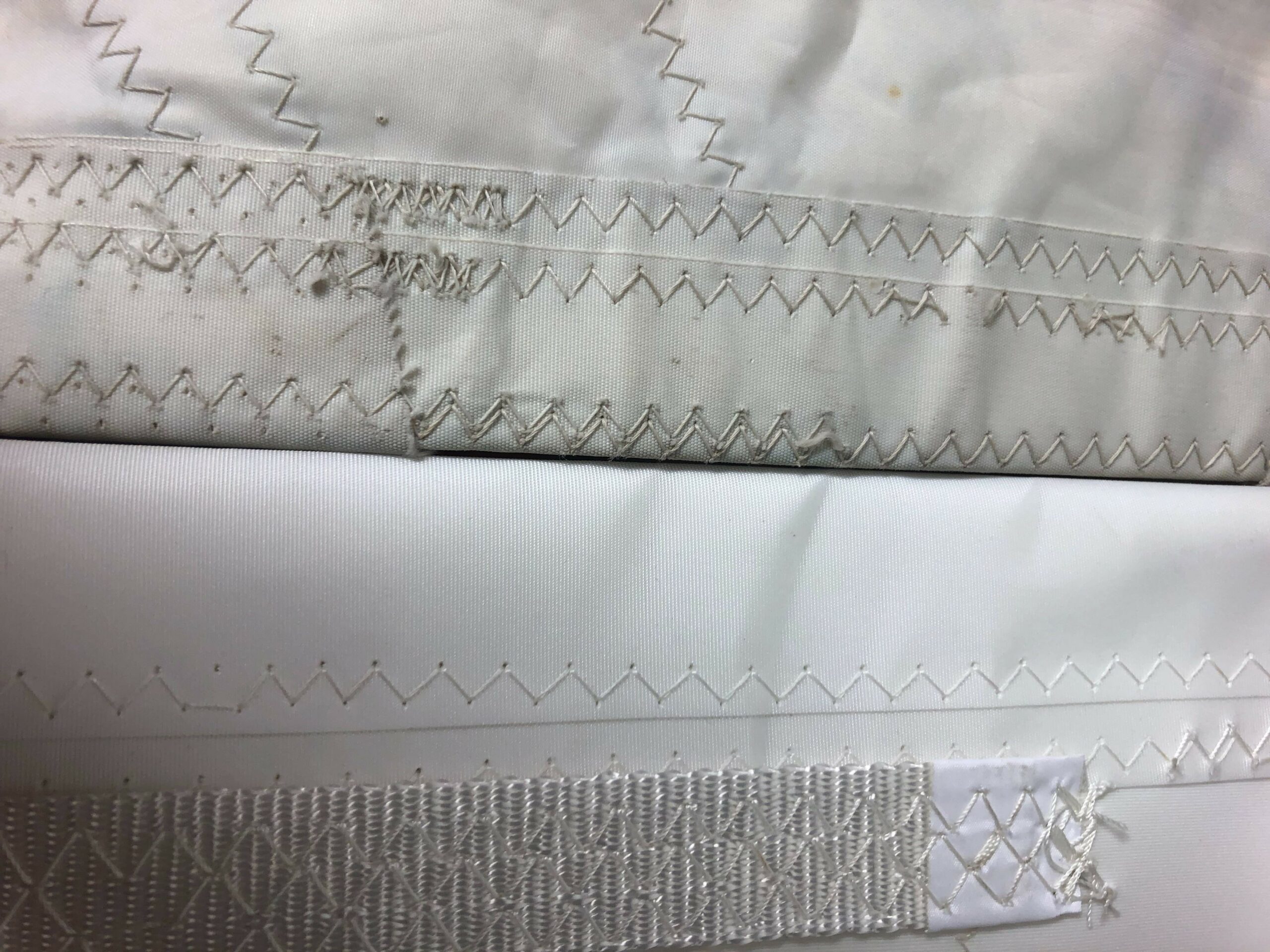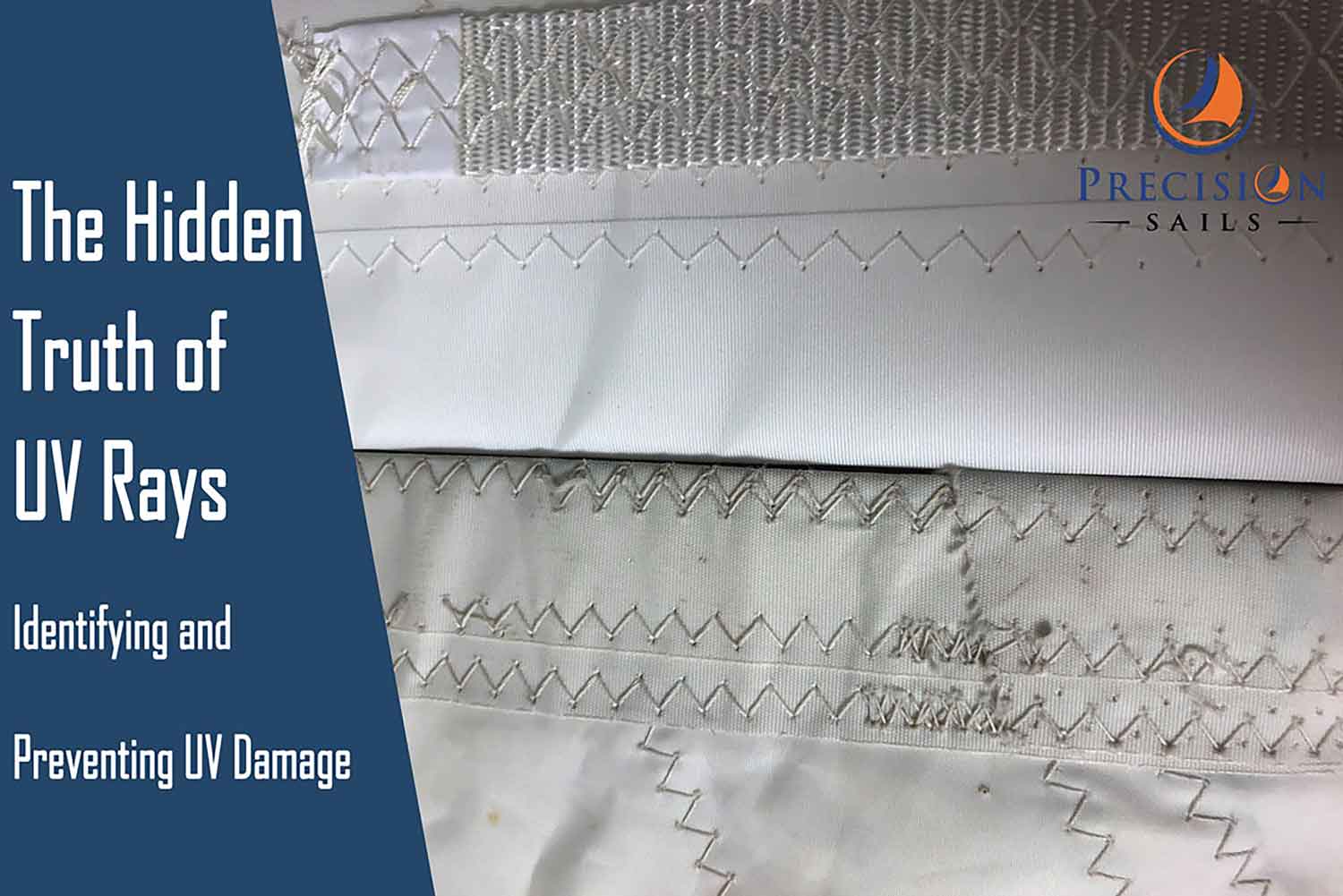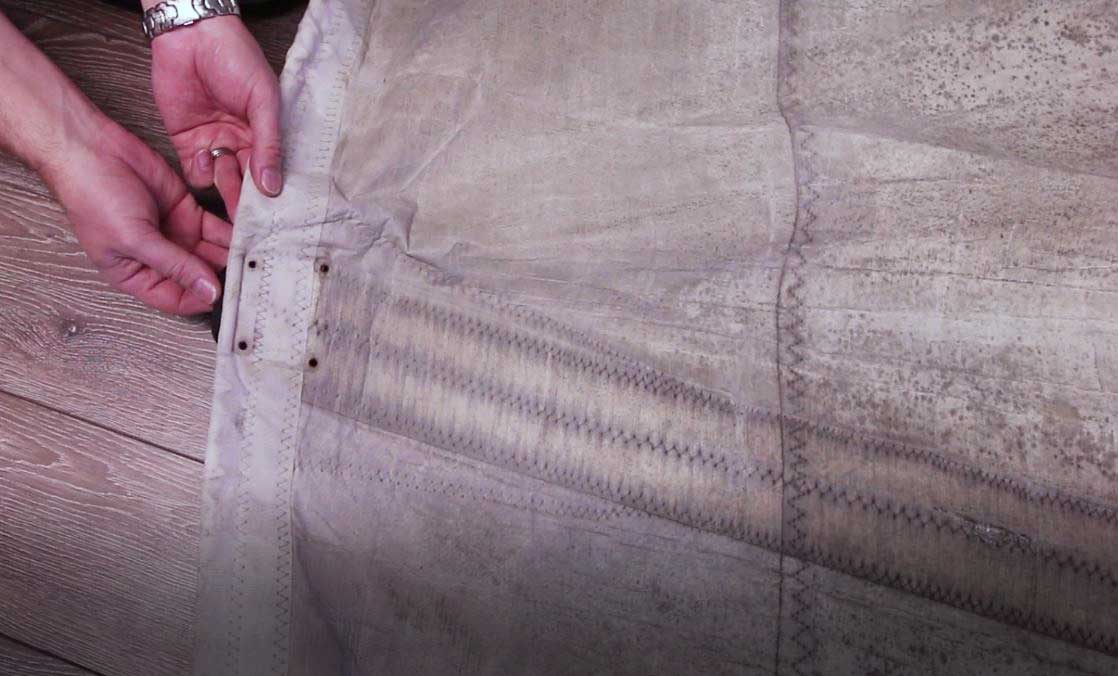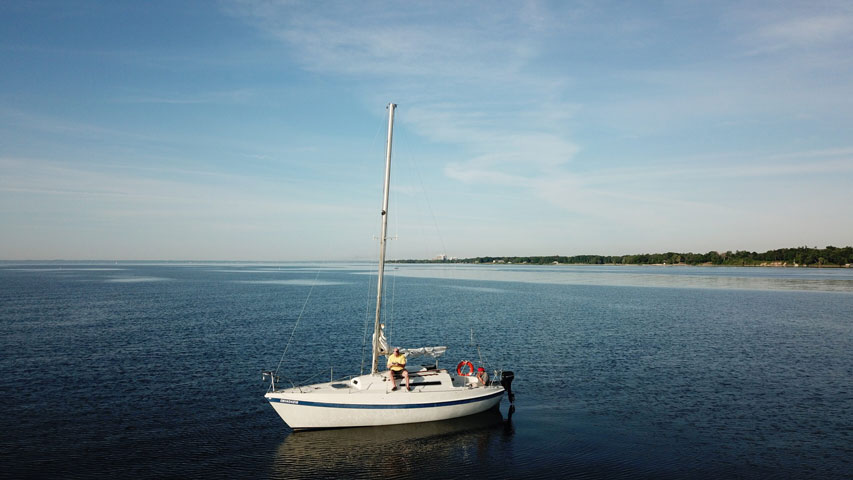The Hidden Truth of UV Rays
Sailcloth is made up of smaller threads which are strung together as warp and fill fibers designed to take on the specific load bearing needs of a sail’s design. You can read more about that here. These fibers are susceptible to UV damage as the rays begin to degrade the tensile strength of exposed cloth by breaking it down, almost like sunburn for sails. This can lead to tears, rips, and can rot stitching leaving the panels in a terrible state. Unfortunately, there is one hard truth to this.
There is No Way to Avoid It
Many sails are retired for reasons beyond the effects of UV damage, such as loss of sail shape, performance, upgrading sail inventory, etc. But if left long enough this harmful radiation will eventually spell the end. As you use your sails they are exposed to sunlight. This light is made from ultraviolet rays and will begin to breakdown the fibers that make up your sailcloth. The only way to avoid it is to not use your sails’ but that seems extreme. However, using your sails is not the main source of UV damage. Often, the most damage done to sails is by incorrectly storing or protecting them. Look around your local marina, do you see any sails sitting on the boom with a hole in the side of the cover, a headsail partially furled or with no UV Protection? Whether the sails have been sitting there for a long time or just a few days doesn’t matter. It is quite simple: the longer they are exposed to the sun the more the cloth degrades. Sails which are incorrectly stored allow for the breakdown of the cloth to continue as cloth and stitching are left exposed.
Can’t Avoid it, But You Can Prevent It
UV damage doesn’t just happen in a day, in fact it can take years to cause any sort of damage (in specific situations). But knowing what to look for and creating good habits will definitely increase the functional life of your sails. Below you will find information on identifying UV damage on sails and preventative measures you can take to prolong the life of your sails.
Identifying UV Damage on Sails

Note the Discoloration and Stitching on the Older Sail Above vs New Sail Below
Stitching
Check for rotting thread. The stitching on your sail is one of the areas that are most susceptible to damage because it has fewer fibers than cloth and is more exposed. It is best to try to identify any areas of damage by looking over the sail before checking for more evidence. When you think you have found a section of rotted thread you can try the nail test: Place your fingernail along the thread and scrape it. It should stretch but not tear. If it tears you should examine further and determine if you need to replace the stitching in that area. Spot checking your sail in its high risk locations, along its edges, UV protection, and corners will reveal if you are developing larger integrity issues.
Especially check along the UV protection if your headsail furls. The protective strip along the leech and foot is often forgotten as it is designed to be exposed and absorb the ultraviolet rays instead of the sailcloth when furled but the stitching holding it on is exposed the entire time.
Straps and Webbing
The straps and webbing used to reinforce the corners of your sail are made of a thicker material due to the strength requirements of those areas. Broken fibers or increased wear means you should explore installing replacements. Look at the webbing reinforcements, seams, leech tapes and batten pockets. Don’t overlook your dodger, bimini, and mainsail covers either.
Sailcloth and UV Protection
Sailcloth comes in many different brands, weights, thread counts, and UV resistance. Learning more about sailcloth is an important step in selecting a new sail, but when it comes to your current sails here are two ways to check the condition of the cloth:
- Remove the sail from your boat and take it to a location you can hold it up and get underneath of it. You are looking for areas in the sail in which more light shines through (as if the fibers have become smaller allowing more light to pass through). You can also feel the surface of the sail for any spots that feel soft, or coarse as these are clear indicators of cloth which has begun degrading.
- Take a clean spoon or metal object and run the smooth edge along the surface of the sail. If it comes away clean your sails are not “shedding” fibers. If the surface is covered in smaller fibers and appears fuzzy then you should investigate further into the damage. This is a sign that the fibers in the sail have degraded and have lost their tensile strength and have “shredded” along the smooth edge.
Note the Thin Appearance of Cloth, Dark Spots Around Stitching, and Tear on Batten Pocket.
Prevention
Stitching
If you have noticed that the threads in your sail are rotting you can re-stitch the troubling areas. This will take time and effort but is worth it for smaller repairs. Select your replacement thread wisely. If the thread is too heavy, you will end up with puckered seams that will result in fabric tears. Tenara thread will not rot and is a great option to ensure your stitching lasts as long as possible. Needle selection is another factor. If it is too small, the needle will bend and can affect the timing on the sewing machine or create trouble when hand sewing. This is a recipe for frustration.
Using a Dacron thread with thicknesses that varies is a good alternative. There are always new developments in the sailing world so research the best available before beginning repairs. Don’t forget to choose the lightest thread and the smallest needle that will suit the fabric of the sail.
Straps and Webbing
If you are planning a DIY repair, be sure to use a heavy-duty sewing machine. Corner straps harden as they age and with use. Using anything lightweight will only mean a lot of broken needles and more headaches.
Sailcloth and UV Protection
Take note of how you store your sails and anything that seems to be repeatedly exposed to sunlight. Storing your sails below deck whenever possible will also help prolong their lifespan. Make sure your sails are furled the correct way (especially with white Dacron UV protection) and that light spilling in through the mast-gate on your furling mainsail is not on a specific spot consistently.
UV protection and sun covers are a great way to prevent deterioration. Darker colors will last longer and heavier materials like Sunbrella and Weathermax will offer better protection for your sails but white Dacron can be added as a sacrificial strip to your sail as well.
It is also a good idea to check your sails for other issues, like mildew, and clean them regularly.
Your Sails Best Chance…
Make it part of your storage routine to inspect for damage, especially on the tapes, corner patches, and stitching. The bottom line is a good maintenance routine is key to the longevity of sails and covers.
Sail repairs can be costly and only a temporary gain in the total life of your sail depending on their condition. It is a good idea to weigh the cost of repairing a sail and purchasing a replacement sail against one another. If you are concerned that the damage to your sails is too great and would like to discuss your options don’t hesitate to give us a call.
Do you have any tips or tricks you have discovered to help battle against UV damage? Visit our facebook page and leave us a comment or send us a message for us to include in our article.




